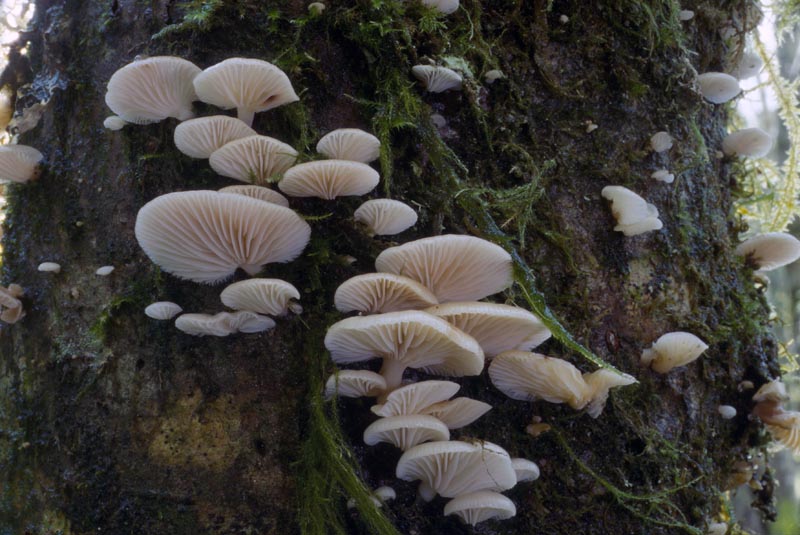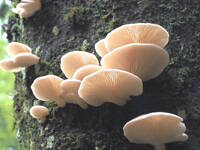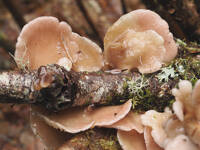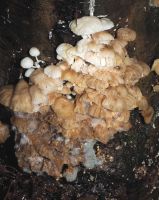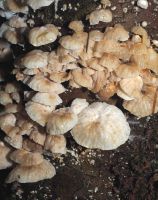Conservation Status: Not of concern
Edibility: In our area, we have three common species that have been placed in the genus Panellus but which when compared with one another are not very much alike, beyond the fact that all have a pleurotoid stature and rather small, white, amyloid spores. These are P. stypticus (Bulliard: Fries) P. Karsten, a small ochraceous brown, tough, astringent-tasting species; P. serotinus (Schrader: Fries) Kühner, a tough, rather large, often viscid, yellowish green to olivaceous brown, late-fall (its common name is winter oyster) species; and P. longinquus (= Pleurotopsis longinquus (Berkeley) E. Horak) a small, viscid to slimy species with a pink to white or sometimes purplish brown, distinctly striate cap that is attached by a small stipe, and white to pinkish gills. It is a fairly common species, most abundant in cool wet falls, but also present at other times, on a variety of hardwood trees including alder and maple.
In our area, we have three common species that have been placed in the genus Panellus but which when compared with one another are not very much alike, beyond the fact that all have a pleurotoid stature and rather small, white, amyloid spores. These are P. stypticus (Bulliard: Fries) P. Karsten, a small ochraceous brown, tough, astringent-tasting species; P. serotinus (Schrader: Fries) Kühner, a tough, rather large, often viscid, yellowish green to olivaceous brown, late-fall (its common name is winter oyster) species; and P. longinquus (= Pleurotopsis longinquus (Berkeley) E. Horak) a small, viscid to slimy species with a pink to white or sometimes purplish brown, distinctly striate cap that is attached by a small stipe, and white to pinkish gills. It is a fairly common species, most abundant in cool wet falls, but also present at other times, on a variety of hardwood trees including alder and maple.
In the PNW
PNW Herbaria: Specimen records of Panellus longinquus in the Consortium of Pacific Northwest Herbaria database
CalPhotos: Panellus longinquus photos

